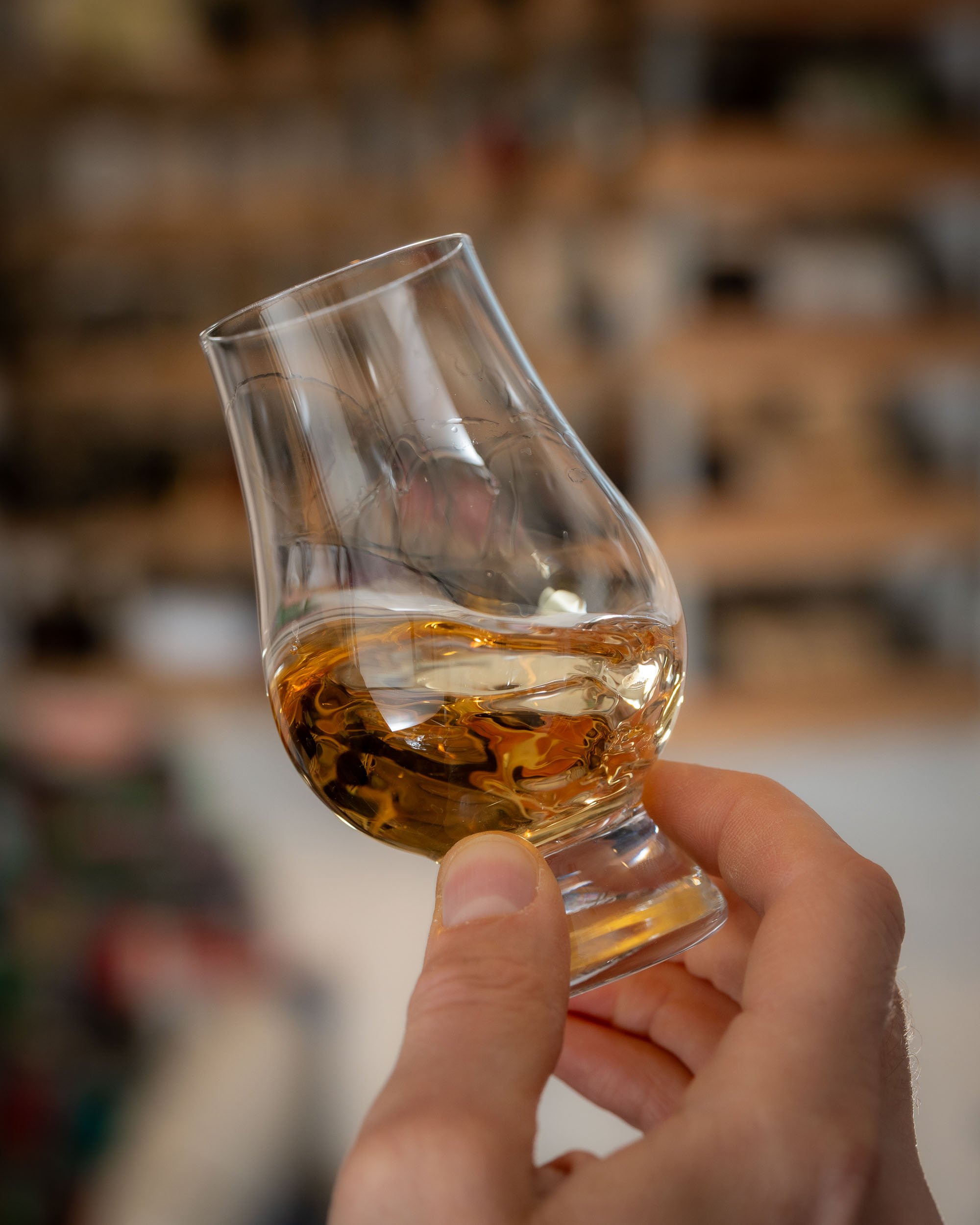Whisky Tasting Explained: a journey through aroma, palate and finish
Embarking on the world of whisky can be an exhilarating yet perplexing experience, especially when confronted with the intricate jargon of aroma and flavor. Fear not, for in this guide, I aim to unravel the mysteries behind the 'correct' protocol for tasting whisky and decode the myriad tastes and flavours that grace this exquisite spirit.
Whisky tasting notes are typically split into three parts: Nose, Palate & Finish. Let’s explore each one.
Nose
To truly appreciate whisky, begin with the nose. The aromas, or the bouquet of scents, are best perceived in a tulip-shaped glass. This unique glass design concentrates and directs the scents toward your olfactory senses (an example of a good glass can be found here).
Many connoisseurs argue that this is the most important part of whisky tasting as you will pick up more of the variety and nuance in the aroma than in the actual tasting, so don't ignore it.
You're likely to have come across tasting notes that mention things like fresh fruit, wood or honey. Descriptors like these are subjective, evoking personal memories and experiences. There is no right or wrong here, simply what the whisky evokes for you.
Enjoy this part, part don't sniff too hard, especially on whiskies with a high abv!
Palate
This is the moment you've been waiting for - sipping the whisky. Take a modest amount into your mouth, allowing it to coat your palate. Make sure to move it around before swallowing. Each whisky is a unique experience, ranging from sweet and juicy to punchy or dry to refreshing. This experience can affect the overall taste.
Many of the flavours will echo those you picked up when nosing the whisky but nuances will emerge, sometimes only revealed from holding the whisky in your mouth.
Finish
As you swallow that small sip, enter the finish – the lingering aftertaste. A long finish means the flavours endure, while a short finish sees them dissipate quickly. This stage may unveil new flavours, subtle earlier but now more prominent as the initial tastes fade away.
Other things to consider
Occasionally, a drop or two of water can be added cautiously to reduce alcohol concentration and enhance flavours.
If you're serious about your whisky journey, keep a journal. Take notes as you explore different distilleries and expressions, creating a personal library for comparisons.
Remember!
There is no definitive way to taste whisky, and no whisky is objectively good or bad; it's all about personal preference. Embrace variety, compare expressions, and let curiosity be your guide. That's the Whisky Centurion way.
Enjoyment of whisky is about so much more than just the taste though. The presentation, the bottle, the colour, the glass you drink it from all play a part in the ceremony of a wee dram and can add to or detract from the experience.
Stay curious and keep sipping! Cheers to the wide world of whisky.
Remember!
There is no definitive way to taste whisky, and no whisky is objectively good or bad; it's all about personal preference. Embrace variety, compare expressions, and let curiosity be your guide. That's the Whisky Centurion way.
Enjoyment of whisky is about so much more than just the taste though. The presentation, the bottle, the colour, the glass you drink it from all play a part in the ceremony of a wee dram and can add to or detract from the experience.
Stay curious and keep sipping! Cheers to the wide world of whisky.



